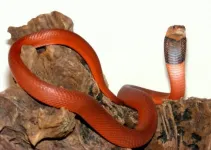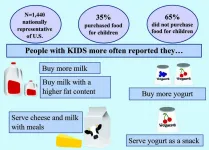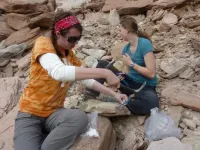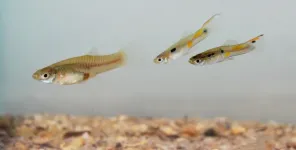Snakes evolve a magnetic way to be resistant to venom
2021-01-15
(Press-News.org) Certain snakes have evolved a unique genetic trick to avoid being eaten by venomous snakes, according to University of Queensland research.
Associate Professor Bryan Fry from UQ's Toxin Evolution Lab said the technique worked in a manner similar to the way two sides of a magnet repel each other.
"The target of snake venom neurotoxins is a strongly negatively charged nerve receptor," Dr Fry said.
"This has caused neurotoxins to evolve with positively charged surfaces, thereby guiding them to the neurological target to produce paralysis.
"But some snakes have evolved to replace a negatively charged amino acid on their receptor with a positively charged one, meaning the neurotoxin is repelled.
"It's an inventive genetic mutation and it's been completely missed until now.
"We've shown this trait has evolved at least 10 times in different species of snakes."
The researchers found that the Burmese python - a slow-moving terrestrial species vulnerable to predation by cobras - is extremely neurotoxin resistant.
"Similarly, the South African mole snake, another slow-moving snake vulnerable to cobras, is also extremely resistant," Dr Fry said.
"But Asian pythons which live in trees as babies, and Australian pythons which do not live alongside neurotoxic snake-eating snake, do not have this resistance.
"We've long known that some species - like the mongoose - are resistant to snake venom through a mutation that physically blocks neurotoxins by having a branch-like structure sticking out of the receptor, but this is the first time the magnet-like effect has been observed."
"It has also evolved in venomous snakes to be resistant to their own neurotoxins on at least two occasions."
The discovery was made after the establishment of UQ's new $2 million biomolecular interaction facility, the Australian Biomolecular Interaction Facility (ABIF).
"There's some incredible technology at the ABIF allowing us to screen thousands of samples a day," Dr Fry said.
"That facility means we can do the kinds of tests that would have just been science fiction before, they would have been completely impossible."
INFORMATION:
The research has been published in Proceedings of the Royal Society B (DOI: 10.1098/rspb.2020.2703).
The Australian Biomolecular Interaction Facility (ABIF) was funded through a $1 million Australian Research Council Linkage Infrastructure, Equipment and Facilities (LIEF) grant, with $1 million contributing funding from UQ, Griffith University, Queensland University of Technology, James Cook University, and the University of Sunshine Coast.
[Attachments] See images for this press release:

ELSE PRESS RELEASES FROM THIS DATE:
2021-01-15
PHILADELPHIA - Our biological or circadian clock synchronizes all our bodily processes to the natural rhythms of light and dark. It's no wonder then that disrupting the clock can wreak havoc on our body. In fact, studies have shown that when circadian rhythms are disturbed through sleep deprivation, jet lag, or shift work, there is an increased incidence of some cancers including prostate cancer, which is the second leading cause of cancer death for men in the U.S. With an urgent need to develop novel therapeutic targets for prostate cancer, researchers at the Sidney Kimmel Cancer - ...
2021-01-15
Oxygen levels in the ancient oceans were surprisingly resilient to climate change, new research suggests.
Scientists used geological samples to estimate ocean oxygen during a period of global warming 56 million years ago - and found "limited expansion" of seafloor anoxia (absence of oxygen).
Global warming - both past and present - depletes ocean oxygen, but the new study suggests warming of 5°C in the Paleocene Eocene Thermal Maximum (PETM) led to anoxia covering no more than 2% of the global seafloor.
However, conditions are different today to the PETM - today's rate of carbon emissions is much faster, and we are adding nutrient pollution to the oceans - both of which could drive more rapid and expansive oxygen loss.
The study was carried out by an international ...
2021-01-15
Champaign, IL, January 15, 2021 - American dairy consumers are often influenced by a variety of factors that can affect their buying habits. These factors include taste, preference, government information, cultural background, social media, and the news. In an article appearing in JDS Communications, researchers found that households that frequently bought food for children are interested in dairy as part of their diet and purchased larger quantities of fluid milk and more fluid milk with a higher fat content.
To assess the purchasing habits of households that purchase food for children versus those ...
2021-01-15
Families are complicated. For members of the Alligatoridae family, which includes living caimans and alligators - this is especially true. They are closely related, but because of their similarity, their identification can even stump paleontologists.
But after the recent discovery of a partial skull, the caimans of years past may provide some clarity into the complex, and incomplete, history of its relatives and their movements across time and space.
Michelle Stocker, an assistant professor of vertebrate paleontology in Virginia Tech's Department of Geosciences in the College of Science; Chris Kirk, of the University of Texas at Austin; and Christopher Brochu, of the University of Iowa, have ...
2021-01-15
Researchers from University of Stavanger, University of Melbourne, and University of Wisconsin-Madison published a new paper in the Journal of Marketing that examines how major projects undertaken by temporary organizations can be better managed so that cost overruns are minimized.
The study forthcoming in the Journal of Marketing is titled "Mobilizing the Temporary Organization: The Governance Roles of Selection and Pricing" and is authored by Elham Ghazimatin, Erik Mooi, and Jan Heide.
When consumers return to the skies again, they may do so in Boeing's 787 Dreamliner. But the project, or "temporary organization," created to make this plane ...
2021-01-15
Just like humans trying to stick to New Year's resolutions, guppies have varying levels of self-control, a new study shows.
Researchers from the University of Exeter and Ghent University studying the behaviours of Trinidadian guppies tested "inhibitory control" (suppressing unhelpful impulses or urges).
The tiny fish first learned how to swim into a cylinder to get food - then a cover was removed to make the cylinder transparent.
Inhibitory control was measured by whether a guppy resisted the urge to swim directly towards the food - bumping into the cylinder - or still swam around, ...
2021-01-15
Researchers have developed a DNA test to quickly identify secondary infections in COVID-19 patients, who have double the risk of developing pneumonia while on ventilation than non-COVID-19 patients.
For patients with the most severe forms of COVID-19, mechanical ventilation is often the only way to keep them alive, as doctors use anti-inflammatory therapies to treat their inflamed lungs. However, these patients are susceptible to further infections from bacteria and fungi that they may acquire while in hospital - so called 'ventilator-associated pneumonia'.
Now, a team of scientists ...
2021-01-15
Former director of public health Professor John Ashton has said that scientific scepticism may be reinforced by the UK's rush to approve COVID vaccines for public use and the apparent political desire to be the first out of the blocks in contrast to our European neighbours.
Writing in the Journal of the Royal Society of Medicine, Prof Ashton says that to risk the trust of the public for the sake of a couple of weeks propaganda advantage could prove to be unforgivable should vaccine uptake fall below that required for the ubiquitous 'herd immunity' as a result of giving oxygen to the sceptics.
"In this age of scientific rationality, superstition and anti-science still run deep," he writes. "When an overwhelming majority of the public welcomes the arrival of ...
2021-01-15
BOSTON - Studies with a popular laboratory model, the nematode Caenorhabditis elegans, have revealed a possible therapeutic avenue for a rare but deadly condition in which children are born without the ability to make molybdenum cofactor (Moco) on their own.
Though little known, Moco is essential for life and so far it has proven extremely difficult to stably isolate this compound in the laboratory, preventing its use as a therapeutic supplement. This new work, which appears in Genes & Development, reveals that nematodes genetically engineered to be Moco-deficient can take up Moco that is attached to several types of proteins. This suggests that such protein-Moco complexes could be used as a treatment ...
2021-01-15
In a normal year, biologists Daniel Janzen and Winnie Hallwachs spend about six months in Costa Rica, where they conduct research and pursue conservation efforts in Área de Conservación Guanacaste (ACG), a World Heritage Site in the northwest that encompasses, a network of parks and preserves they helped establish in the 1980s and that has grown to more than 400,000 acres, including marine, dry forest, cloud forest, and rain forest environments.
In 2020 that is where the married couple was when the COVID-19 pandemic took hold of the world, and compelled them to extend their stay in the virus-free forest until the fall, when they felt safe enough to travel back to their other home in Philadelphia.
"With modern laptops and internet, we could watch the world go ...
LAST 30 PRESS RELEASES:
[Press-News.org] Snakes evolve a magnetic way to be resistant to venom



